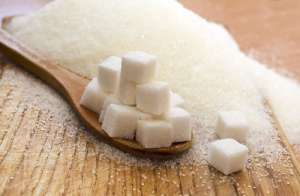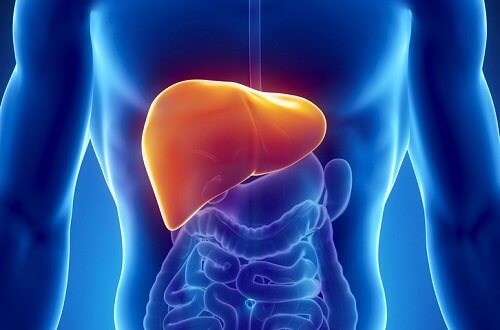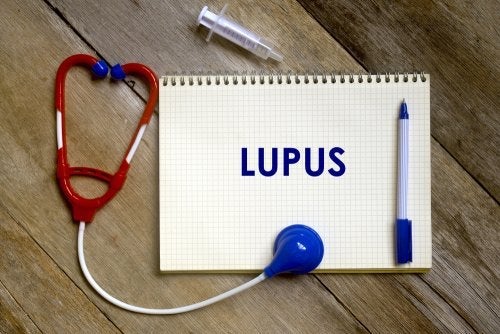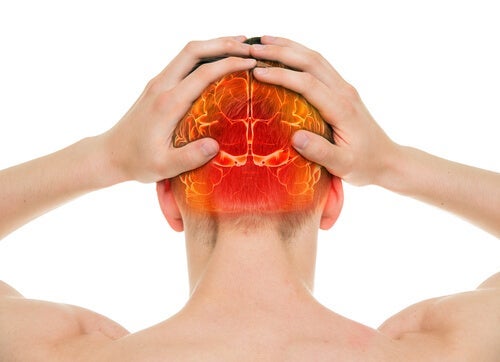砂糖断ちで得られる/7つのウレシイ健康効果

砂糖そのものが悪いというわけではありませんが、問題は摂りすぎです。特に白砂糖はNG。でも、お店でいちばん目につくのはこのタイプですよね。
天然の糖分はくだものの中にも含まれていますし、摂りすぎなければ健康を害することはありません。医療専門家が心配しているのは、多くの人が毎日の食生活で白砂糖を大量に摂取していること。この精製された砂糖は、化学的に処理されており、コカインと同じように中毒になり得るという、こわ〜いシロモノなのです。
砂糖をすっかり断ってしまうなんてとてもムリ! と思っていませんか。料理やコーヒー・紅茶に使うだけでなく、日頃から親しんでいるスイーツやパン・スナック菓子・加工食品・ソース・清涼飲料など、おいしくて便利な食品には、必ずといっていいほど白砂糖が入っているからです。
それにもかかわらず、医師や栄養士たちは、砂糖が身体に与え得るダメージと、それを避けるにはどうしたらいいかを私たち全員が理解するようにと、警鐘を鳴らし続けています。
砂糖を食生活から取りのぞくと、あなたの健康にビックリするような変化が見られ、生活の質も向上します。今回は、今日からさっそく砂糖断ちすべき7つの理由をご紹介します。
満腹感を感じる!
砂糖は、体内においてレプチンというホルモンの生成を妨げます。このレプチンは、食後の満足感を生み出し、食欲を抑えてくれるダイエットの味方。つまり、砂糖を食べることで、もっと食べたいという欲求がますます湧いてくるのです。
砂糖断ちをすると、身体が食欲を調整し始めます。口にする食物が十分な満足感を与えてくれるので、カロリーの摂取量が減り、甘いものを食べたいと思わなくなります。
心臓を守る!

砂糖を多量に含み、グリセミック指数(食後の血糖値の上昇度合い)が高い食生活は、心臓疾患のリスク上昇とつながりがあると考えられています。
砂糖断ちは、心臓を守り、中性脂肪を抑える方法のひとつ。中性脂肪は、砂糖から得られる余分なカロリーを貯蓄するのに使われ、善玉コレステロールの働きを妨げます。
こちらの記事もお忘れなく: 心臓を守るガーリックスープ
お腹の脂肪が減る!
砂糖は高カロリー食品で、ビタミン・ミネラル・食物繊維を含んでいません。カロリーが高くて栄養に欠けているため、砂糖は脂肪の蓄積をまねき、肥満の原因となり得ます。
学術誌『Endocrine Society(内分泌学会)』に発表された研究は、砂糖の摂取はお腹とウエストのまわりの脂肪蓄積を引き起こし得ると報告しています。つまり、砂糖断ちすることで、たぷたぷお腹を解消することが可能なのです!
肝臓を守る!

雑誌『Nature』に発表された研究は、砂糖の摂りすぎはアルコールに似たマイナス効果を肝臓に与える、と示唆しています。
砂糖断ちは、肝臓の働きすぎを防ぎ、肝機能を最高の状態に保つ手助けをしてくれるのです。
腎臓結石を防ぐ!
あまり知られていない事実ですが、白砂糖を摂取することで、腎臓結石ができるリスクが25%上昇します。もっとひどいことに、炭酸飲料のような砂糖を大量に含む飲み物は、このリスクを33%引上げる可能性があるのです。
この問題を避けるためには、炭酸飲料やその他の甘い飲み物を断ち、生ジュースや水などの健康的な代替品を選ぶようにしましょう。
脳を守る!

完全には証明されていませんが、いくつかの研究によると、血糖値の急激な上昇は、脳損傷を引き起こし、記憶力を低下させる原因のひとつであり得るという結果が得られたそうです。
ただし、砂糖の摂りすぎが高血糖値の主な原因であることは知られています。
こちらもお読みください: 歩くことはどう脳の役に立つのか
お肌を若々しく保つ!
砂糖を摂ると、グリケーション(生体内糖化反応)と呼ばれるプロセスが起こり、皮膚のエラスチン(弾性繊維)とコラーゲンを損傷します。つまり、砂糖は美肌の大敵なのです!
砂糖を断つか、少なくとも摂取量を減らすことで、お肌の健康を守り、シワやシミなどの老化現象が早くからあらわれるのを防ぐことができます。さっそく今日から実行しましょう!
引用された全ての情報源は、品質、信頼性、時代性、および妥当性を確保するために、私たちのチームによって綿密に審査されました。この記事の参考文献は、学術的または科学的に正確で信頼性があると考えられています。
- Adamowicz, J., & Drewa, T. (2011). Is there a link between soft drinks and erectile dysfunction?. Central European journal of urology, 64(3), 140–143. https://www.ncbi.nlm.nih.gov/pmc/articles/PMC3921721/
- Ahmad, A., Isherwood, C., Umpleby, M., & Griffin, B. (2020). Effects of High and Low Sugar Diets on Cardiovascular Disease Risk Factors. Journal of nutritional science and vitaminology, 66(Supplement), S18–S24. https://pubmed.ncbi.nlm.nih.gov/33612591/
- Ahmed, S. H., Guillem, K., & Vandaele, Y. (2013). Sugar addiction: pushing the drug-sugar analogy to the limit. Current opinion in clinical nutrition and metabolic care, 16(4), 434–439. https://pubmed.ncbi.nlm.nih.gov/23719144/
- Alahmary, S. A., Alduhaylib, S. A., Alkawii, H. A., Olwani, M. M., Shablan, R. A., Ayoub, H. M., Purayidathil, T. S., Abuzaid, O. I., & Khattab, R. Y. (2019). Relationship Between Added Sugar Intake and Sleep Quality Among University Students: A Cross-sectional Study. American journal of lifestyle medicine, 16(1), 122–129. https://pubmed.ncbi.nlm.nih.gov/35185434/
- Avena, N. M., Rada, P., & Hoebel, B. G. (2008). Evidence for sugar addiction: behavioral and neurochemical effects of intermittent, excessive sugar intake. Neuroscience and biobehavioral reviews, 32(1), 20–39. https://pubmed.ncbi.nlm.nih.gov/17617461/
- Can the right diet get rid of acne?. (s.f.). American Academy of Dermatology Association. Consultado el 29 de marzo de 2023. https://www.aad.org/public/diseases/acne/causes/diet
- Cao, C., Xiao, Z., Wu, Y., & Ge, C. (2020). Diet and skin aging—From the perspective of food nutrition. Nutrients, 12(3), 870. https://www.mdpi.com/2072-6643/12/3/870
- Capucho, A. M., & Conde, S. V. (2022). Impact of Sugars on Hypothalamic Satiety Pathways and Its Contribution to Dysmetabolic States. Diabetology, 4(1), 1-10. https://www.mdpi.com/2673-4540/4/1/1
- Chen, L., Xie, Y. M., Pei, J. H., Kuang, J., Chen, H. M., Chen, Z., Li, Z. W., Fu, X. Y., Wang, L., Lai, S. Q., Zhang, S. T., Chen, Z. J., & Lin, J. X. (2018). Sugar-sweetened beverage intake and serum testosterone levels in adult males 20-39 years old in the United States. Reproductive biology and endocrinology : RB&E, 16(1), 61. https://www.ncbi.nlm.nih.gov/pmc/articles/PMC6015465/
-
Chong, C. P., Shahar, S., Haron, H., & Din, N. C. (2019). Habitual sugar intake and cognitive impairment among multi-ethnic Malaysian older adults. Clinical interventions in aging, 14, 1331–1342. https://pubmed.ncbi.nlm.nih.gov/31413554/
-
Czlapka-Matyasik, M., Lonnie, M., Wadolowska, L., & Frelich, A. (2018). “Cutting Down on Sugar” by Non-Dieting Young Women: An Impact on Diet Quality on Weekdays and the Weekend. Nutrients, 10(10), 1463. https://www.ncbi.nlm.nih.gov/pmc/articles/PMC6213198/
- Danby F. W. (2010). Nutrition and aging skin: sugar and glycation. Clinics in dermatology, 28(4), 409–411. https://pubmed.ncbi.nlm.nih.gov/20620757/
-
Elyasi, F., Kashi, Z., Tasfieh, B., Bahar, A., & Khademloo, M. (2015). Sexual dysfunction in women with type 2 diabetes mellitus. Iranian journal of medical sciences, 40(3), 206–213. https://www.ncbi.nlm.nih.gov/pmc/articles/PMC4430881/
- Faruque, S., Tong, J., Lacmanovic, V., Agbonghae, C., Minaya, D. M., & Czaja, K. (2019). The Dose Makes the Poison: Sugar and Obesity in the United States – a Review. Polish journal of food and nutrition sciences, 69(3), 219–233. https://www.ncbi.nlm.nih.gov/pmc/articles/PMC6959843/
- Ferraro, P. M., Taylor, E. N., Gambaro, G., & Curhan, G. C. (2013). Soda and other beverages and the risk of kidney stones. Clinical journal of the American Society of Nephrology : CJASN, 8(8), 1389–1395. https://www.ncbi.nlm.nih.gov/pmc/articles/PMC3731916/
- Ferraro, P. M., Bargagli, M., Trinchieri, A., & Gambaro, G. (2020). Risk of Kidney Stones: Influence of Dietary Factors, Dietary Patterns, and Vegetarian-Vegan Diets. Nutrients, 12(3), 779. https://www.ncbi.nlm.nih.gov/pmc/articles/PMC7146511/
-
Gordon, E. L., Ariel-Donges, A. H., Bauman, V., & Merlo, L. J. (2018). What Is the Evidence for “Food Addiction?” A Systematic Review. Nutrients, 10(4), 477. https://www.ncbi.nlm.nih.gov/pmc/articles/PMC5946262/
- Jensen, T., Abdelmalek, M. F., Sullivan, S., Nadeau, K. J., Green, M., Roncal, C., Nakagawa, T., Kuwabara, M., Sato, Y., Kang, D. H., Tolan, D. R., Sanchez-Lozada, L. G., Rosen, H. R., Lanaspa, M. A., Diehl, A. M., & Johnson, R. J. (2018). Fructose and sugar: A major mediator of non-alcoholic fatty liver disease. Journal of hepatology, 68(5), 1063–1075. https://www.ncbi.nlm.nih.gov/pmc/articles/PMC5893377/
- Johnson, R. J., Perez-Pozo, S. E., Lillo, J. L., Grases, F., Schold, J. D., Kuwabara, M., Sato, Y., Hernando, A. A., Garcia, G., Jensen, T., Rivard, C., Sanchez-Lozada, L. G., Roncal, C., & Lanaspa, M. A. (2018). Fructose increases risk for kidney stones: potential role in metabolic syndrome and heat stress. BMC nephrology, 19(1), 315. https://pubmed.ncbi.nlm.nih.gov/30409184/
- Ley, S. H., Hamdy, O., Mohan, V., & Hu, F. B. (2014). Prevention and management of type 2 diabetes: dietary components and nutritional strategies. Lancet (London, England), 383(9933), 1999–2007. https://www.ncbi.nlm.nih.gov/pmc/articles/PMC4751088/
- Ma, X., Nan, F., Liang, H., Shu, P., Fan, X., Song, X., Hou, Y., & Zhang, D. (2022). Excessive intake of sugar: An accomplice of inflammation. Frontiers in immunology, 13, 988481. https://www.ncbi.nlm.nih.gov/pmc/articles/PMC9471313/
- Macdonald I. A. (2016). A review of recent evidence relating to sugars, insulin resistance and diabetes. European journal of nutrition, 55(Suppl 2), 17–23. https://www.ncbi.nlm.nih.gov/pmc/articles/PMC5174139/
-
Maiorino, M. I., Bellastella, G., & Esposito, K. (2014). Diabetes and sexual dysfunction: current perspectives. Diabetes, metabolic syndrome and obesity : targets and therapy, 7, 95–105. https://pubmed.ncbi.nlm.nih.gov/24623985/
- Mantantzis, K., Schlaghecken, F., Sünram-Lea, S. I., & Maylor, E. A. (2019). Sugar rush or sugar crash? A meta-analysis of carbohydrate effects on mood. Neuroscience & Biobehavioral Reviews/Neuroscience And Biobehavioral Reviews, 101, 45-67. https://www.sciencedirect.com/science/article/abs/pii/S0149763418309175?via%3Dihub
- Moreira, A. R. O., Batista, R. F. L., Ladeira, L. L. C., Thomaz, E. B. A. F., Alves, C. M. C., Saraiva, M. C., Silva, A. A. M., Brondani, M. A., & Ribeiro, C. C. C. (2021). Higher sugar intake is associated with periodontal disease in adolescents. Clinical oral investigations, 25(3), 983–991. https://pubmed.ncbi.nlm.nih.gov/32519237/
- Moynihan P. (2016). Sugars and Dental Caries: Evidence for Setting a Recommended Threshold for Intake. Advances in nutrition (Bethesda, Md.), 7(1), 149–156. https://pubmed.ncbi.nlm.nih.gov/26773022/
- Rippe, J. M., & Angelopoulos, T. J. (2016). Relationship between Added Sugars Consumption and Chronic Disease Risk Factors: Current Understanding. Nutrients, 8(11), 697. https://pubmed.ncbi.nlm.nih.gov/27827899/
- Sugar and the Brain. (2016). Harvard Medical School. https://hms.harvard.edu/news-events/publications-archive/brain/sugar-brain.
- Shapiro, A., Tümer, N., Gao, Y., Cheng, K. Y., & Scarpace, P. J. (2011). Prevention and reversal of diet-induced leptin resistance with a sugar-free diet despite high fat content. British Journal of Nutrition, 106(3), 390-397. https://www.cambridge.org/core/journals/british-journal-of-nutrition/article/prevention-and-reversal-of-dietinduced-leptin-resistance-with-a-sugarfree-diet-despite-high-fat-content/B5151988E8E23EB1F7CC75565B2BE069
-
Westwater, M. L., Fletcher, P. C., & Ziauddeen, H. (2016). Sugar addiction: the state of the science. European journal of nutrition, 55(2), 55-69. https://link.springer.com/article/10.1007/s00394-016-1229-6
- Winterdahl, M., Noer, O., Orlowski, D., Schacht, A. C., Jakobsen, S., Alstrup, A. K., … & Landau, A. M. (2019). Sucrose intake lowers μ-opioid and dopamine D2/3 receptor availability in porcine brain. Scientific reports, 9(1), 16918. https://www.nature.com/articles/s41598-019-53430-9
- Wiss, D. A., Avena, N., & Rada, P. (2018). Sugar addiction: from evolution to revolution. Frontiers in psychiatry, 545. https://www.frontiersin.org/articles/10.3389/fpsyt.2018.00545/full
- Witek, K., Wydra, K., & Filip, M. (2022). A High-Sugar Diet Consumption, Metabolism and Health Impacts with a Focus on the Development of Substance Use Disorder: A Narrative Review. Nutrients, 14(14), 2940. https://pubmed.ncbi.nlm.nih.gov/35889898/
このテキストは情報提供のみを目的としており、専門家との相談を代替するものではありません。疑問がある場合は、専門家に相談してください。









